Alice Simniceanu, MPH’15, was part of a group of World Heath Organization (WHO) workers who recently helped Central American doctors successfully get through a COVID-19 hospital outbreak.
Ms. Simniceanu, an infection control practitioner, and her WHO colleagues used video conferencing to consult with the doctors, assess the situation, and offer advice, such as screening workers each day before starting a shift, no eating in cafeterias, and increased cleaning.
“To hear that the advice I gave actually reduced health-care worker infections and helped stop their outbreak gives me some fulfillment that I am working this hard for a reason,” says Ms. Simniceanu.
Eight months ago, she left her job at a Toronto hospital to move to Switzerland to work at the WHO, the United Nations agency responsible for international public health.
Now, Ms. Simniceanu is helping to make decisions that impact hundreds of thousands of health-care workers around the world who seek expert advice on how to fight COVID-19. Sometimes, like with the Central American doctors, she works directly with health-care professionals to fight a COVID-19 outbreak.
Other times she works with international experts to create guidelines and online training modules on how health-care facilities should prepare for COVID-19 and how to put on and remove personal protective equipment (PPE). Doctors, nurses, and health-care administrators around the world follow the WHO’s COVID-19 guidelines. Ms. Simniceanu’s recommendations are translated into about 15 languages and posted on the WHO’s online channels that have about 800,000 subscribers.
It means there is a lot of pressure – and long work days – to make sure Ms. Simniceanu is giving the right advice. It makes her job thrilling, rewarding, and exhausting.
“For me it is one of the most exciting times,” says Ms. Simniceanu. “I just happened to start working for (the WHO) at the time of the world’s largest pandemic.”
Creating WHO guidelines is a collaborative, but challenging process. One challenge is there is limited research and data because COVID-19 has been around for less than a year. Ms. Simniceanu collects as much research as possible, then consults with a group of experts who work together to reach a consensus. Sometimes decisions must be based on evidence from other types of coronaviruses because there is not enough COVID-19 research. She is constantly looking at new studies to see if the most recent research will require the WHO to change its guidelines.
“I have never experienced pressure like this in my life,” says Ms. Simniceanu. “I have to make sure every word I write is meaningful and evidence-based. We get called out on every single piece work and video we produce.”
She first became interested in infectious diseases while studying at Queen’s. She didn’t want a public health job that involved sitting behind a desk all day. She learned about infectious disease control from a former adjunct professor, Ann Jolly. It seemed like an exciting way to work on the hospital frontlines and have a direct impact on people.
Are you or a Queen’s graduate you know making a difference in the fight against COVID-19? Tell us.


